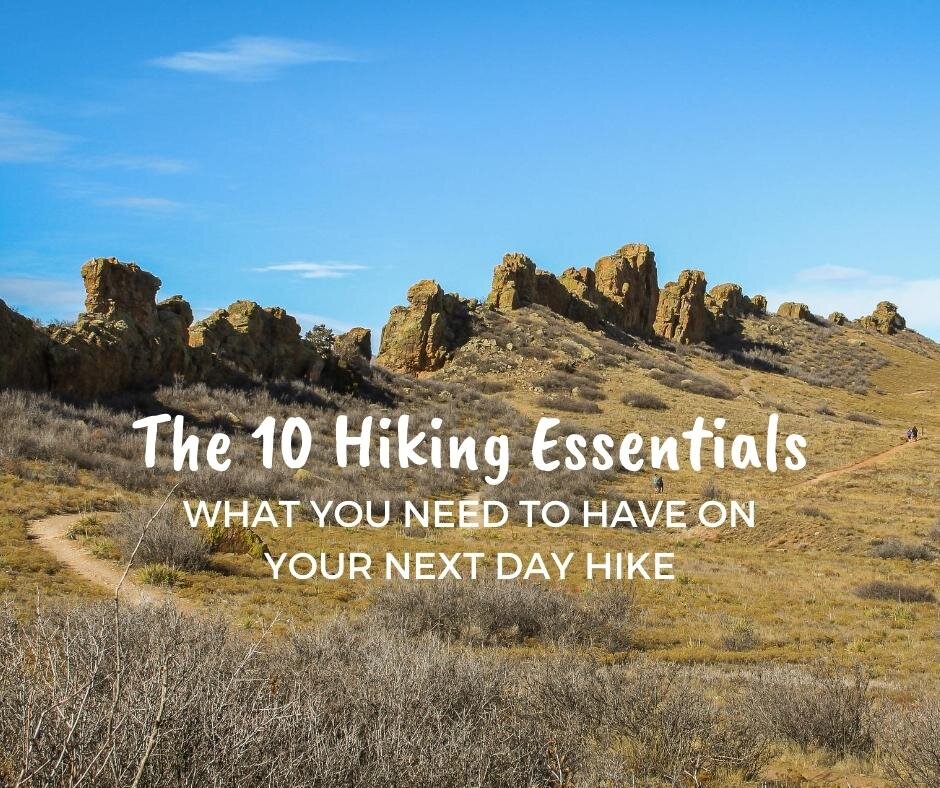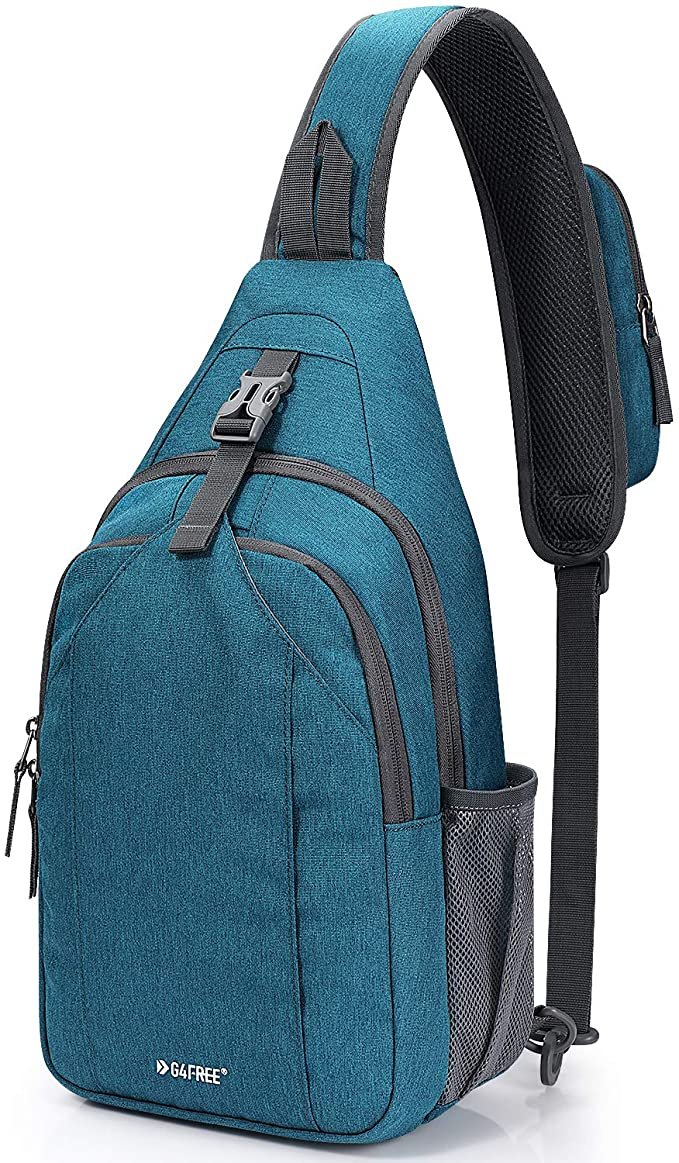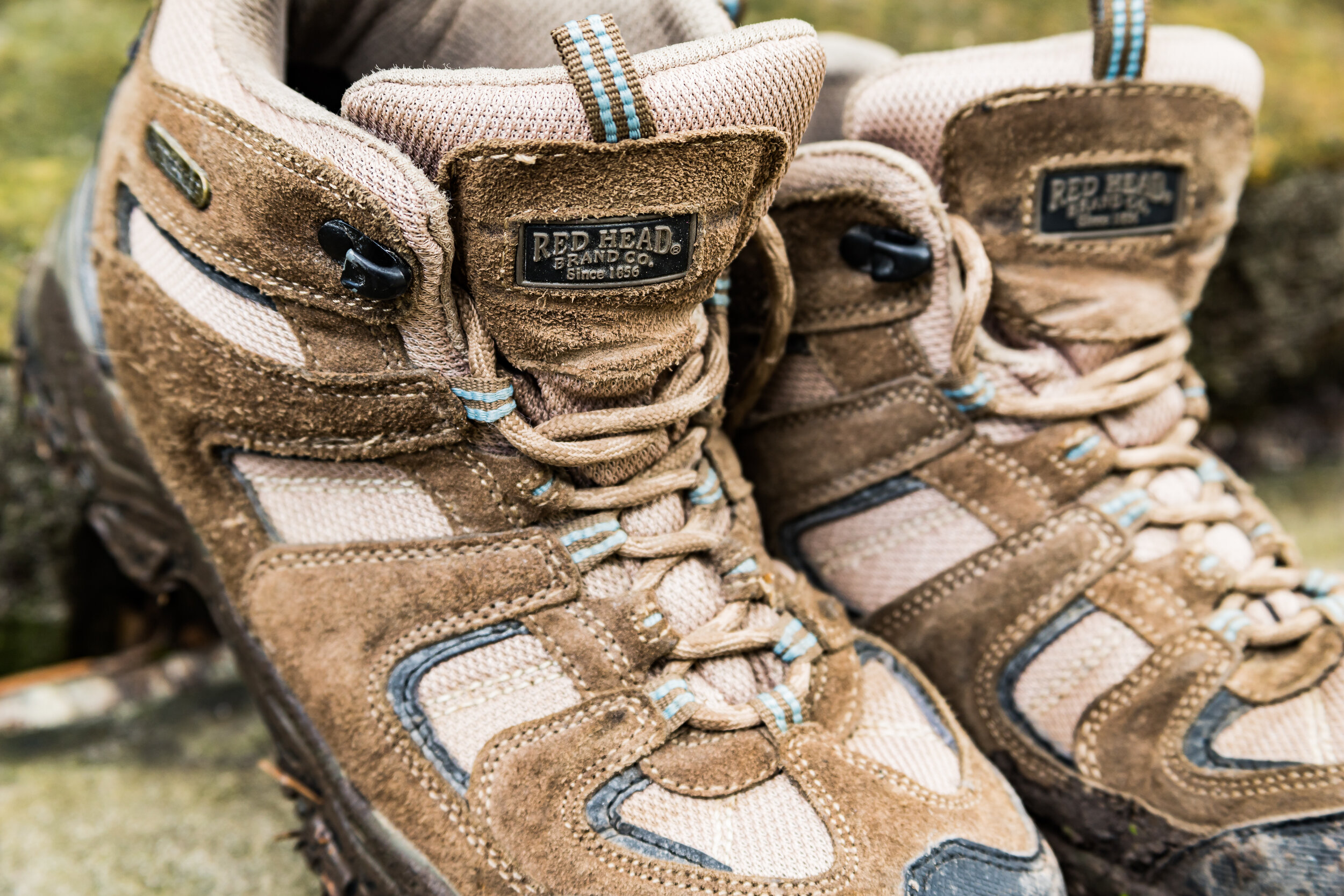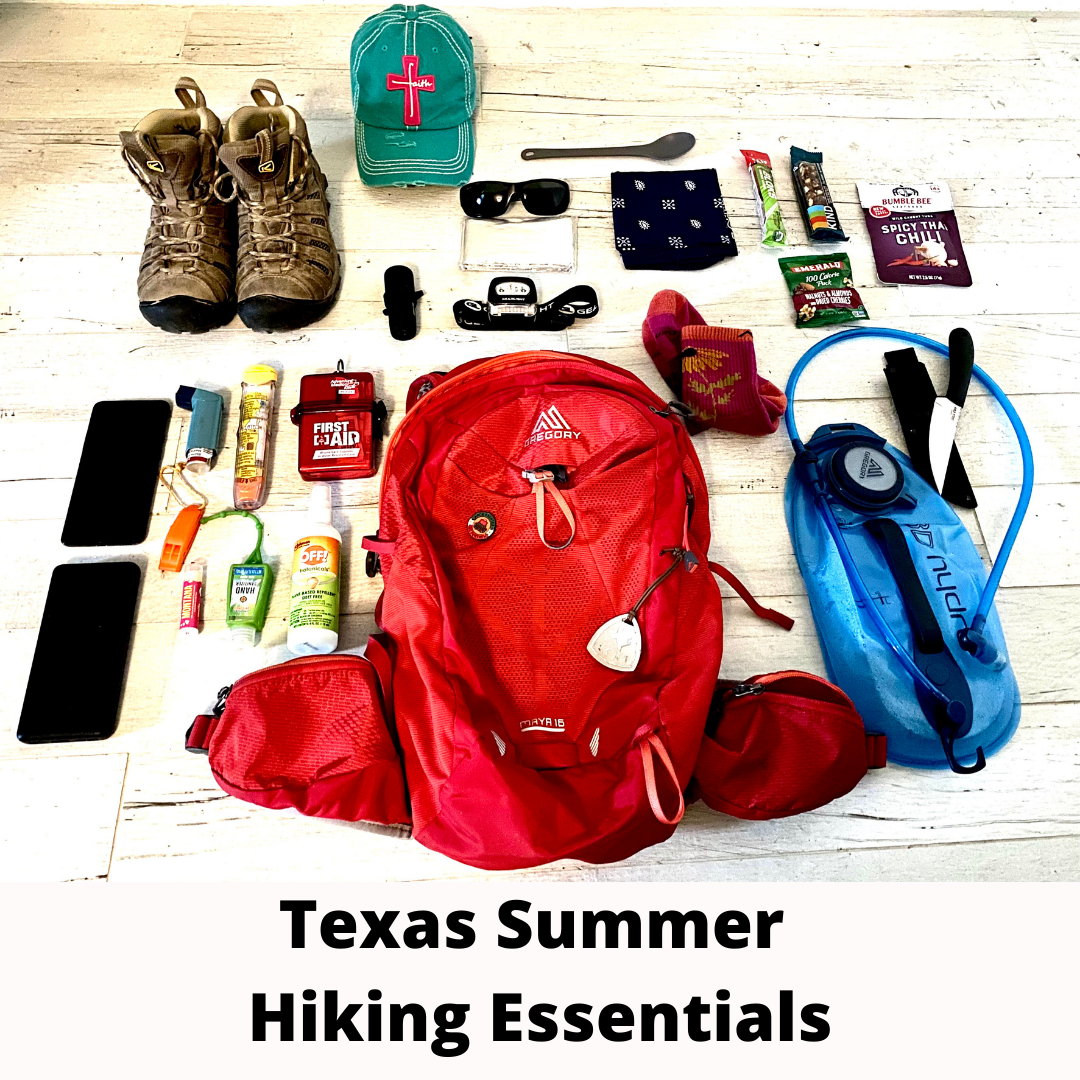The 10 Hiking Essentials For A Day On The Trails
Devil’s Backbone - Loveland, Colorado
For me, spending time hiking and exploring the trail systems in a national or state park is a delightful way to spend a day. The thrill of throwing my backpack in the car and heading out to trek an old favorite or do some day hiking of a new path is exciting.
So whether you crave hiking far into the mountains or traveling a flatter terrain, federal and state lands have a broad network of trails geared toward every skill level of hiker.
Then what gear do you need to spend the day hiking and exploring the trails near you? Depending on your trek's length, how remote the area, and the weather forecasted will determine what you need to bring.
Below is a list of the day hiking 10 essentials you should have on hand. While you might not need everything listed at any given time, a common rule of thumb is the farther your mileage and/or the more remote the area you'll be hiking determines what you should pack.
Think of it as either going to the grocery store a mile away or heading out for a weekend getaway. The longer you're gone - the more food, water, clothing, and gear you'll need.
The 10 Hiking Essentials
Here are the hiking 10 essentials that you should have.
A Good Backpack
Proper Footwear - Hiking Boots or Shoes
Sun Protection and Proper Clothing For The Elements
Food and Water
Map and Compass
First Aid Kit Including Insect Repellent And Foot Care
Knife or Multi-Tool
Headlamp
Shelter
Fire
Get A Reliable Backpack and Water Reservoir
Your backpack is the first piece of gear you need for day hiking. One that holds about 16 Liters of equipment is roughly about the right size for all-day hikes. My Gregory Mountain Maya 16L pack has ample storage for day hikes up to 16 miles roundtrip.
I recently upgrade my pack to the Gregory Maya 16L from REI. It’s ergonomic, to fit your body as you trek the trails. I personally like the hip belt pockets since I like to easily reach my snacks. I also like the slightly more rigid frame keeping the pack securely in place and the suspension mesh to reduce a sweaty back.
Or the Osprey Hikelite 18 from Cabela’s. A lightweight pack that combines trail-friendly features and an AirSpeed™ suspended mesh back panel so you don't have to deal with a sweaty or wet back.
Another essential item is your water reservoir. More on this later.
One thing to keep in mind is that a larger backpack is needed to carry additional food, water, and clothing if you're going out for longer multi-day hikes.
Proper Footwear - Should You Wear Hiking Boots or Trail Shoes
The type of terrain should determine what design of footwear you should choose.
Trail runners and/or low top hiking shoes are more suitable for gently rolling hills and flat trails.
A quick tip before purchasing new hiking boots or shoes from your local retailer, wait until the end of the day to try them on and make sure to wear the sock you will use on the trails.
Sun Protection and Proper Clothing For The Elements
While it's enjoyable being out on the trails, not wearing the proper apparel can turn a pleasant day into a bad experience. Be sure to monitor the forecast and dress for the elements before heading out to the park. You'll also want to have clothing for any unexpected changes in the weather.
Don't forget to consider how much protection your clothing provides against the sun's UV rays.
For Day Hiking In Warm Weather
Socks, either wool or synthetic, again cotton holds moisture close to the skin. Keep an extra pair in your pack. Give Darn Tough a try, they’re anti-stink, soft. and guaranteed for life.
Moisture-Wicking Underwear, wearing cotton on hot days, can start to feel sticky and uncomfortable as opposed to colder days where moisture can lead to hypothermia.
Moisture-Wicking Shirt that provides UV protection, long or short sleeve depending on the weather.
Quick-Dry Shorts or Pants
A Light Pullover Or Jacket during shoulder season in case the weather changes
A Rain Jacket
A hat
Snake Gaiters* if you’re hiking in or through tall brush in the back country.
For Day Hiking In Rain, Cold, or Snowy Weather
All the items above plus:
Long Underwear
A Moisture Wicking Pullover
Waterproof Rain Jacket
A Water-Resistant Insulated Jacket that fits over all your layers.
Fleece Lined Pants or Ski Pants/Bibs
A Warm Hat
Mittens or Gloves - place an extra pair in your pack
Micro-Spikes Footwear Traction
Ear Muffs*
Bandana or Buff *
Gaiters for snowy or muddy conditions*
HotHands Hand Warmers*
HotHands Toe Warmers*
*=optional items
Getting caught in an unexpected snowfall can be fun if you pack the 10 Hiking Essentials.
Additional sun protection includes
Sunglasses
Lip Balm - SPF rated
Sunscreen
Food and Water
For shorter hikes, 3-6 miles, bring snacks that you can easily eat on the trails. Think granola or energy bars, jerky, fruit, or nuts. During longer treks, 7-12 miles, add sandwiches or other items for lunch at the summit or the halfway point. My personal favorite is eating a slice of pizza at the peak.
As for water, start with two liters (about 1/2 gallon) for a half-day outing, but modify the amount depending on the length and intensity of the hike, and weather conditions.
Although I sometimes use a 3L water reservoir in my day-pack, I don't always fill it completely. I adjust the amount of water according to weather conditions and mileage.
Map and Compass
Another essential is a trail map and compass. Many of us use some type of hiking phone app to navigate the trails, I use the Alltrails and the Maprika App. But it's a good idea to have a hard copy in your backpack if your phone battery dies. Learning how to read your trail map and compass is a fundamental part of staying safe. Even on the simplest of trails, it's easy to get turned around.
First Aid and Emergency Kit
Then add the following items:
Hand Sanitizer or Antiseptic/Alcohol Wipes
Blister Treatments
Rx Medication
Survivor Whistle
Insect Repellent
Toilet Paper, Pee Rag (check out Kula Cloth), or a Urination Device (like pStyle)
Feminine Hygiene Product you may need
A Small Fire-Starter Kit including a lighter or waterproof matches
Emergency Shelter like a Mylar Blanket or a Rain Poncho
A Knife or Multi-Tool: Mossy Oak has some great knives.
A Small Gear Repair Kit - zip ties, duct tape, a couple of yard of paracord rope
Headlamp with extra batteries: Vont headlamp is one of the best out there in my opinion.
Two Printed Itinerary Routes - leave one with a friend or family member and other with your ICE information (In Case of Emergency Contact) on the floorboard of your car. If you’re on a solo adventure check in at the ranger station and let them know your itinerary. While solo hiking in Glacier National Park I let the ranger know my hiking plan then checked in again when I got back.
Some Optional Items You Might Want To Bring On Your Day Hike
Field Journal / Pencil
Camera
Binoculars
Altimeter Watch
Don't Forget These Items
Your ID
A Credit Card or Cash
Cellphone
Download you free 10 Hiking Essentials
Wrapping Up
Day hiking and exploring the trails in a national or state park is a great way to spend a morning or afternoon. And whether you crave hiking far into the mountains or traveling a flatter terrain, staying safe on the trails is paramount.
These items are part of the Hiking Ten Essential. The specific things you bring for each hike can be tailored to your particular outing. Decide what you need to bring by researching weather conditions, mileage, duration, trail complexity, and distance from emergency help.
With a little preparation before hitting the trails and being equipped with the essentials, is the key to having a wonderful time exploring nature no matter the season.
Let me know what you can’t live without on the trails in the comments. And if know of someone who would find this article helpful, please share it with them.
Want to keep this information handy don’t forget to bookmark the page. Sign up and I’ll send you the free 10 Hiking Essentials Checklist. And I’ll keep you in the loop on where to find the best locations without going to all the same places as everyone else.
If we’re not connected on social media come on over and let’s be friends. You can find me on Facebook or Instagram @thehikingtexan
Affiliate Disclosure: This site contains affiliated links to my favorite websites. As a verified Amazon Associate and a member of the Amazon Influencer Program I earn from qualifying purchases. I may receive a commission for any purchases made by you on their website using these links, but don’t worry, you won’t pay more by going through their link. Plus, I only recommend products I’ve used, thoroughly tested, and can recommend without hesitation.













